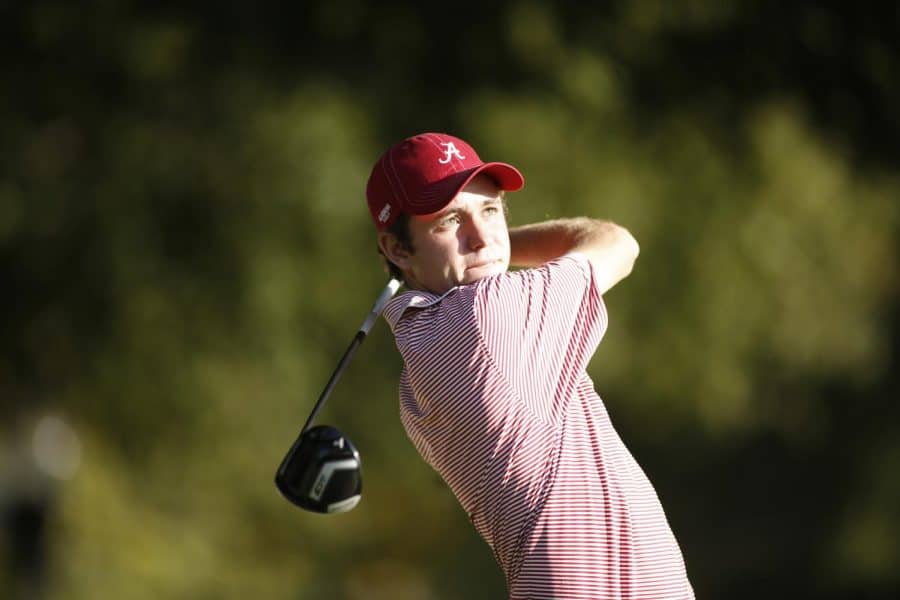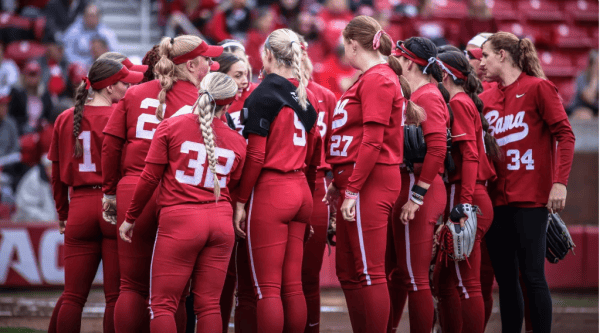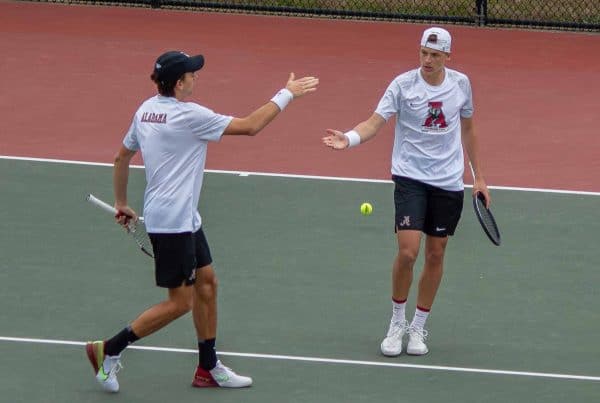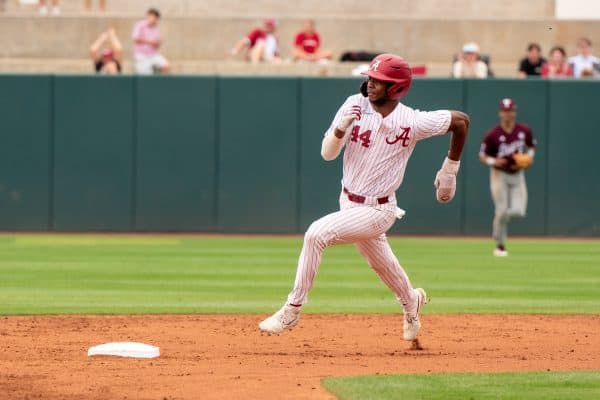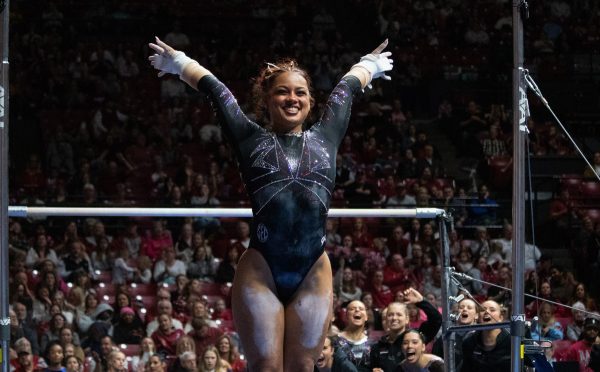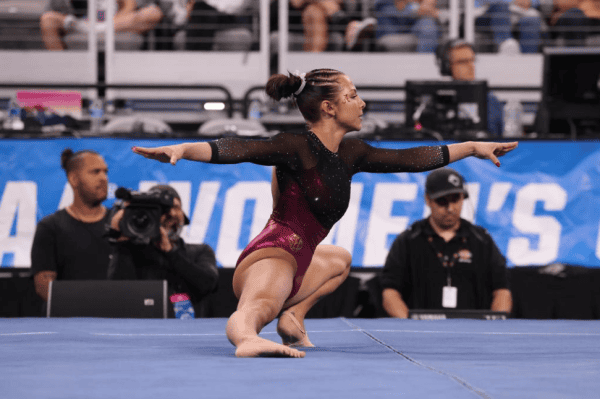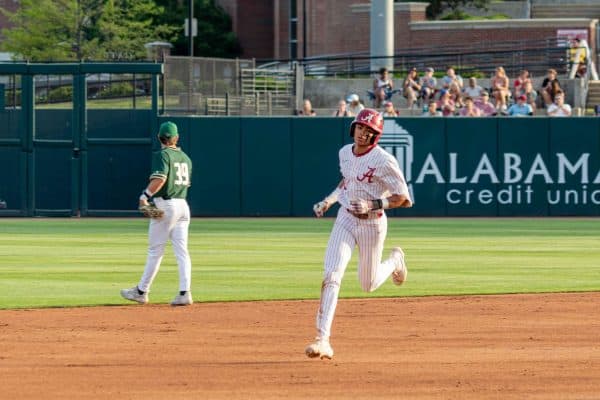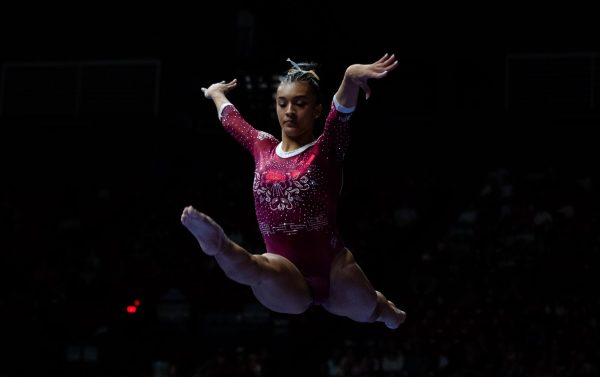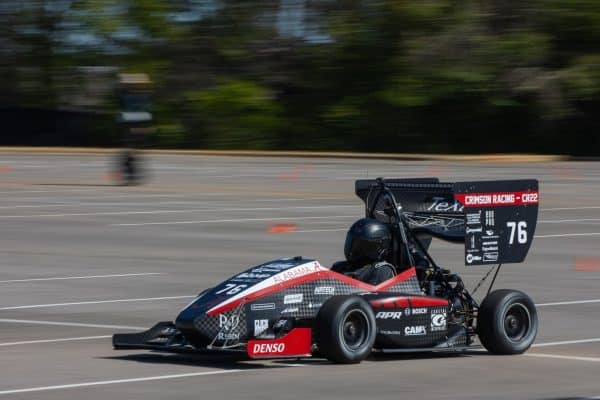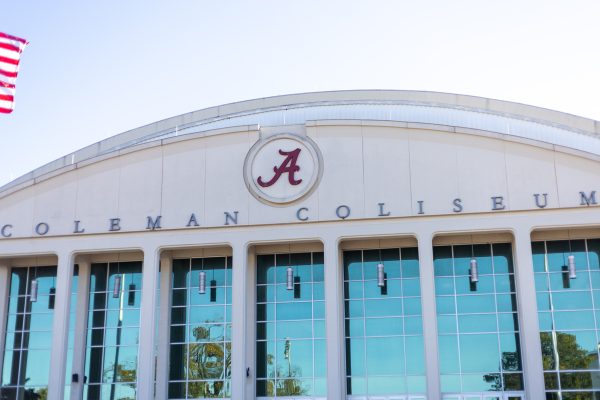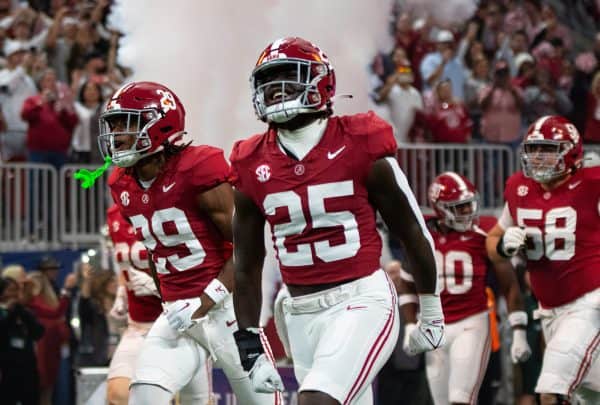Men’s golf faces new challenges entering spring
February 18, 2019
No one around the Alabama men’s golf team saw it coming.
Alabama’s No. 1 player and the former No. 1 player in college golf, Davis Riley, elected to turn professional after the fall season.
That left sophomores Davis Shore and Wilson Furr as the team’s top two players. Having a pair of sophomores as the team’s stalwarts and emotional leaders would be less than ideal for most teams, but they say last year’s veterans prepared them well.
“Guys like Lee [Hodges], Davis Riley, Jonathan Hardee – they were great guys to look up to and great players,” Shore said. “Wilson [Furr] and I have talked a little bit about it, like, ‘OK, we have to step up our games a little bit because now we’re 1-2.’ We know what it takes to be at the top level of college golf.”
Incoming freshmen don’t instinctively know what it takes, though, which is why the experienced players sometimes have to take them aside to teach them.
Furr said sloppiness away from the course translates to competition, so whether it’s managing how to practice, being on time or something as simple as putting the bread away, they need to learn how to conduct themselves like Division I athletes.
“Jonathan Hardee was the best thing ever for Davis Shore,” Furr said. “He probably hated him for half the year because he was just on him all the time about being late, but at the end they’re best friends, and Shore probably appreciates what happened.”
Even while Riley was with the team in the fall, Shore and Furr took on an increased role in holding the freshmen accountable. Shore advised a freshman to swing less aggressively with his driver to emphasize accuracy, and Furr recommended that one of them practice the speed of his putting.
“I know for a fact if Davis [Riley] had told me something last year like ‘Hey, you need to improve your chipping,’ I’d be like ‘Oh, I better do that,’” Shore said. “It’s going to mean more coming from a teammate.”
After Shore and Furr, the team’s No. 3 and 4 players are freshmen: Frankie Capan III and Prescott Butler. Capan played in four of five tournaments in the fall – finishing tied for eighth in his debut – and Butler played in three.
Senior Alex Green will offset the top four’s youth in this week’s Puerto Rico Classic, but head coach Jay Seawell said the competition for the fifth spot will be ongoing. Junior Josh Sedeno and sophomore Ben Fuller are also in contention.
“Alex is an incredible young man who does everything right, and I want to reward that,” Seawell said. “He represents what I believe Alabama’s about, being excellent on and off the golf course, and I think our players look up to him.”
Whoever the starting five are throughout the spring, they’ll have to navigate a litany of rules that were significantly altered on Jan. 1. Golf’s most sweeping rules change since 1952 when golf’s two major governing bodies released their first joint compilation, has drawn mixed reviews.
Furr said “the dadgum drop” is the weirdest of them all. For decades, relief from man-made objects or puddles involved dropping the ball from shoulder height. This year it changed to knee height.
Golfers were also previously assessed a two-stroke penalty for striking the flagstick while they were putting. The penalty has been removed, prompting double takes and head shakes from the game’s traditionalists.
“I’m 52 years old, and I’ve been around the game for 40 years – putting with the pin in, you almost want to run and take it out,” Seawell said. “It’s not like they’ve made it easier. … These are the new rules, and if you play by the old rules, now you’re under a penalty.”
To avoid confusion, Seawell and assistant coach Jon Howell brought in United States Golf Association officials for a two-hour seminar to explain the new terminology and answer players’ questions.
Most players have yet to play an official event under the new rules, but three (Shore, Furr and Capan) played in the prestigious Jones Cup Invitational in early February.
Howell also hosts an unofficial tournament for the team called the Howell Cup, in which he can dictate the club, height or curvature of any of the players’ shots to teach them how to adapt to conditions with a variety of shots.
“I’d like to say I’m pretty good at [shotmaking], but I need to get better,” Furr said. “When it’s perfect outside you don’t need it, but when conditions start getting hard – if it’s a left-to-right wind, you need to [hit a right-to-left shot].”
Perhaps more importantly, the Jones Cup and Howell Cup help sharpen the players’ mental games back to tournament caliber.
“We don’t just practice,” Seawell said. “We’re trying to simulate competition. If it’s at home and we find little things or there’s the Jones Cup, which our elite players can get into, you’re always trying to find avenues to put our kids in competition mode.”

